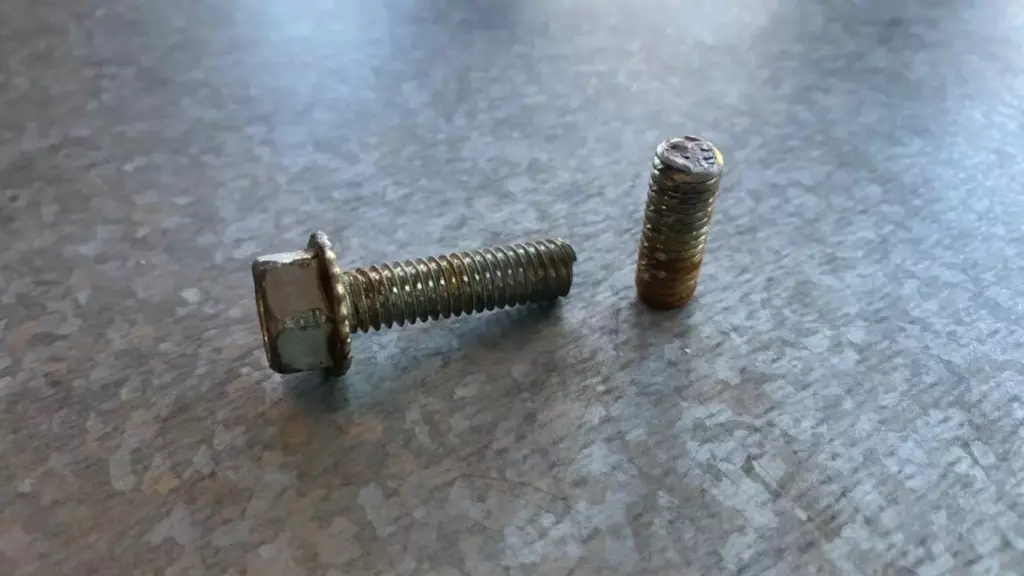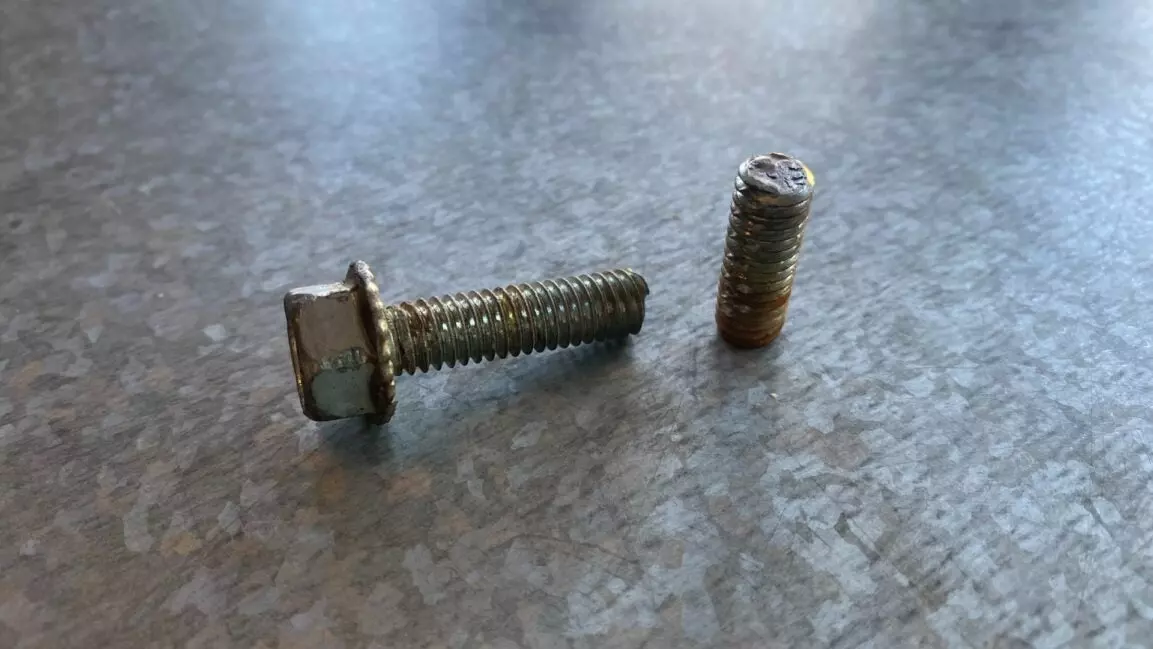
How to Remove a Stripped Bolt: A Comprehensive Guide
Dealing with a stripped bolt can be incredibly frustrating. Whether you’re working on your car, assembling furniture, or tackling a home repair project, a bolt with a rounded-off or damaged head can bring your progress to a screeching halt. Understanding how to remove a stripped bolt efficiently and without causing further damage is a crucial skill for any DIY enthusiast or professional mechanic. This comprehensive guide will walk you through various methods, tools, and techniques to successfully remove a stripped bolt, ensuring you can get back to your project with minimal hassle.
Understanding Stripped Bolts
Before diving into the solutions, it’s important to understand why bolts become stripped in the first place. A stripped bolt typically refers to a bolt whose head has been damaged, making it difficult or impossible for a wrench or socket to grip it effectively. This damage can occur due to several reasons:
- Over-tightening: Applying excessive torque can cause the head of the bolt to deform or round off.
- Using the wrong size tool: Using a wrench or socket that is too large can cause slippage and damage to the bolt head.
- Corrosion: Rust and corrosion can weaken the bolt head, making it more susceptible to stripping.
- Poor quality materials: Bolts made from low-quality materials are more prone to stripping under stress.
Essential Tools for Removing Stripped Bolts
Having the right tools on hand is essential for successfully removing a stripped bolt. Here are some of the most useful tools you might need:
- Penetrating Oil: Helps to loosen corroded or stuck bolts.
- Hammer: For gently tapping tools into place.
- Vice Grips: Provide a strong grip on the bolt head.
- Bolt Extractors: Specifically designed to grip and remove stripped bolts.
- Drill: For drilling out the bolt head as a last resort.
- Left-Handed Drill Bits: Can sometimes catch and unscrew the bolt while drilling.
- Easy Outs (Screw Extractors): Used in conjunction with a drill to extract the bolt.
- Sockets and Wrenches: A variety of sizes, including metric and SAE, to ensure a proper fit.
- Torx Bits: Can sometimes provide a better grip on rounded bolt heads.
- Angle Grinder: For cutting a slot in the bolt head to use with a flathead screwdriver.
Methods for Removing a Stripped Bolt
Now, let’s explore various methods for removing a stripped bolt, starting with the least invasive and progressing to more aggressive techniques.
Using Penetrating Oil
Before attempting any removal method, apply a generous amount of penetrating oil to the bolt and let it soak for at least 15-30 minutes. This helps to loosen any corrosion or rust that may be binding the bolt in place. Reapply the oil periodically, especially if the bolt is severely stuck. [See also: How to Choose the Right Penetrating Oil]
Vice Grips (Locking Pliers)
Vice grips are a versatile tool that can often provide enough grip to remove a stripped bolt. Here’s how to use them effectively:
- Adjust the vice grips to the correct size so they fit snugly around the bolt head.
- Clamp down firmly on the bolt head, ensuring the teeth of the vice grips have a good bite.
- Slowly and carefully attempt to turn the bolt counterclockwise.
- If the vice grips slip, readjust and try again, applying more pressure as needed.
Bolt Extractors
Bolt extractors are specifically designed to grip and remove a stripped bolt. They come in various sizes and types, including spiral-fluted and reverse-threaded extractors. Here’s how to use a spiral-fluted bolt extractor:
- Select an extractor that is slightly smaller than the bolt head.
- Hammer the extractor into the stripped bolt head, ensuring it is securely seated.
- Attach a wrench or socket to the extractor.
- Turn the wrench counterclockwise to unscrew the bolt. The spiral flutes will dig into the bolt head, providing a strong grip.
Reverse-threaded extractors work similarly, but they require drilling a pilot hole in the bolt head first. As you turn the extractor counterclockwise, the reverse threads bite into the bolt, eventually unscrewing it.
Using a Hammer and Chisel
If the bolt head is partially accessible, you can try using a hammer and chisel to tap the bolt loose. This method requires precision and patience:
- Position the chisel at an angle on the edge of the bolt head.
- Gently tap the chisel with the hammer in a counterclockwise direction.
- Continue tapping, gradually rotating the bolt until it begins to loosen.
- Once the bolt is loose enough, you may be able to turn it with your fingers or a pair of pliers.
Cutting a Slot for a Flathead Screwdriver
If you have access to an angle grinder or a rotary tool with a cutting disc, you can cut a slot in the bolt head to accommodate a flathead screwdriver. This method works best when the bolt head is not completely rounded off:
- Carefully cut a slot across the bolt head, making it deep and wide enough to fit a flathead screwdriver.
- Insert the flathead screwdriver into the slot.
- Apply pressure and turn the screwdriver counterclockwise to unscrew the bolt.
Drilling Out the Bolt Head
As a last resort, you can drill out the bolt head. This method is more destructive and requires careful execution to avoid damaging the surrounding material:
- Use a center punch to create a pilot point in the center of the bolt head.
- Start with a small drill bit and gradually increase the size until the bolt head separates from the shank.
- Once the head is removed, you may be able to remove the remaining shank with vice grips or by using a screw extractor.
Using Left-Handed Drill Bits
Left-handed drill bits can be a surprisingly effective way to remove a stripped bolt. The idea is that as you drill into the bolt, the reverse rotation of the drill bit can sometimes catch and unscrew the bolt:
- Start by center-punching the bolt head to create a pilot point.
- Insert the left-handed drill bit into your drill.
- Apply steady pressure and begin drilling.
- If you’re lucky, the drill bit will catch, and the bolt will start to unscrew itself.
Welding a Nut to the Stripped Bolt
If you have access to a welder, you can weld a nut onto the stripped bolt head. The heat from the welding process can also help to loosen the bolt. This is a more advanced technique, but it can be very effective:
- Clean the bolt head and the nut to remove any rust or debris.
- Position the nut over the stripped bolt head.
- Weld the nut securely to the bolt head.
- Once the weld has cooled, use a wrench to turn the nut and unscrew the bolt.
Preventing Stripped Bolts
Prevention is always better than cure. Here are some tips to help prevent bolts from stripping in the first place:
- Use the correct size tool: Always use a wrench or socket that fits snugly on the bolt head.
- Avoid over-tightening: Use a torque wrench to tighten bolts to the manufacturer’s specifications.
- Apply lubricant: Use anti-seize lubricant on bolts, especially in areas prone to corrosion.
- Use quality tools: Invest in high-quality wrenches and sockets that are less likely to slip and damage bolt heads.
- Inspect bolts regularly: Check bolts for signs of corrosion or damage and replace them as needed.
Conclusion
Removing a stripped bolt can be a challenging task, but with the right tools and techniques, it is certainly achievable. By understanding the causes of stripped bolts and taking preventative measures, you can minimize the risk of encountering this problem in the future. Remember to start with the least invasive methods and progress to more aggressive techniques as needed. Whether you’re using vice grips, bolt extractors, or drilling out the bolt head, patience and persistence are key to successfully remove a stripped bolt and get your project back on track. If all else fails, don’t hesitate to seek the help of a professional mechanic or technician. They have the experience and specialized tools to handle even the most stubborn stripped bolts. The ability to remove a stripped bolt is a valuable skill, making any repair or maintenance task more manageable and less frustrating. Always prioritize safety, and happy wrenching!

